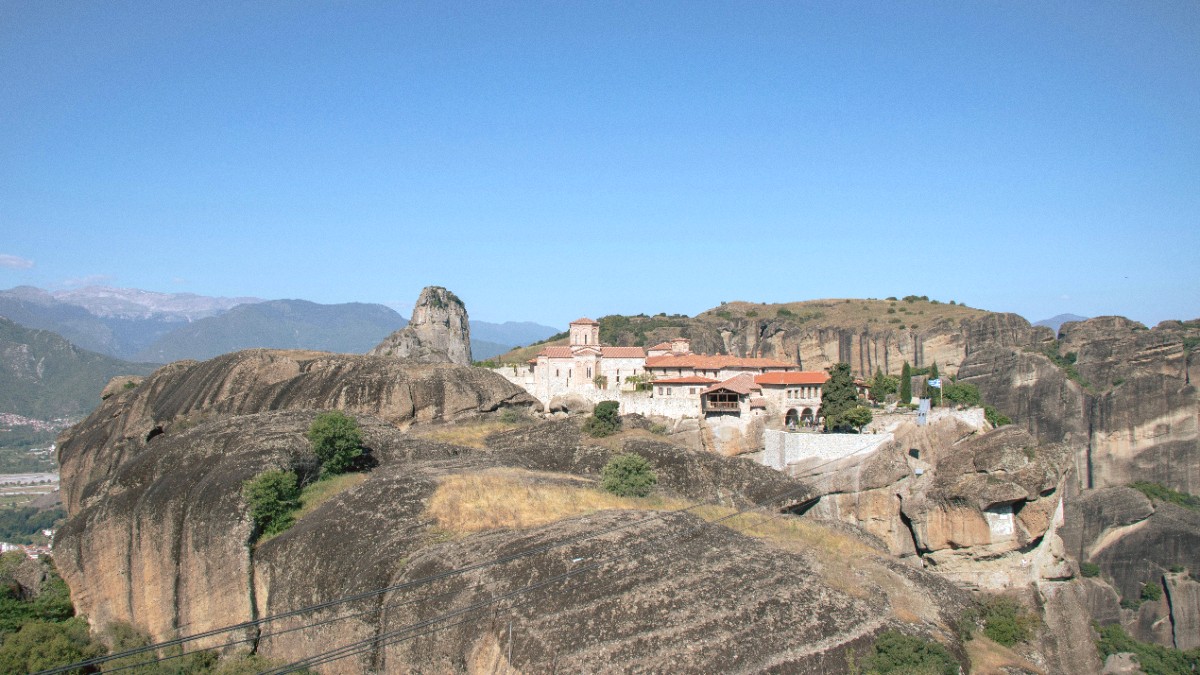
Greece
The monasteries, built hundreds of years ago, seem to grow organically from the stone, creating a scene that feels both earthly and otherworldly. It is a place that invites quiet reflection and grand exploration, offering views and experiences that etch themselves into memory. Prepare to discover a location where nature's artistry and human endeavor meet in spectacular fashion, providing a journey of both adventure and introspection.
Meteora sits in the heart of Greece, in the Thessaly region, close to Kalambaka and the smaller village of Kastraki. These communities nestle at the base of the rock formations, acting as gateways to the monastic complex above.
The landscape offers an environment rich in diverse flora and fauna. The proximity of Kalambaka provides modern conveniences, while Kastraki offers a quieter, traditional village atmosphere.
The story of Meteora begins with solitude and spiritual seeking. Hermit monks arrived in the 11th century, seeking refuge and quiet contemplation in natural caves and crevices within the rock formations. Their lives were simple, focused on prayer and fasting. They lived in isolation, often only coming together for Sunday services at a small church built at the base of the rocks. This early monastic presence created the groundwork for later, more organized communities.
The true expansion of the monastic community happened in the 14th century. During a period of political instability in Greece, marked by invasions and conflicts, the elevated positions of the Meteora rocks offered protection and security. Access to these heights was challenging, involving long ladders, ropes, or basket hoists, making the monasteries difficult to attack. This isolation became their strength.
Saint Athanasios the Meteorite founded the first organized monastery, the Great Meteoron, around 1356.
"Meteora" means "suspended in the air" or "in the heavens above."
Twenty-four active communities existed by the 16th century.
Six monasteries remain active today: Great Meteoron, Varlaam, Rousanou, St. Nicholas Anapafsas, Holy Trinity, and St. Stephen's.
The monasteries served not only as centers of religious devotion but also as repositories of art, manuscripts, and cultural heritage. They preserved Greek Orthodox traditions and learning during periods of foreign rule.
Each monastery represented a triumph of human will and engineering, with materials and people hoisted up by nets and pulleys.
They preserved Greek Orthodox traditions and learning during periods of foreign rule. Meteora’s UNESCO World Heritage status, granted in 1988, acknowledges its double value.
Over time, the number of active monasteries declined due to various factors, including political changes, economic hardship, and the natural challenges of maintaining such isolated structures.
Meteora is an UNESCO World Heritage site, celebrated for its unique geological pinnacles and the Eastern Orthodox monasteries perched on their summits. It provides a significant pilgrimage site for the Orthodox faithful and draws travelers from across the globe.
For visitors, Meteora offers a blend of activities. You can spend time sightseeing, admiring the monasteries and the panoramic views. Hiking opportunities abound, with trails winding through the rock formations and offering different perspectives of the landscape. For the adventurous, rock climbing on the sheer faces of the pillars provides a challenge.
Walk roads, explore ancient footpaths, appreciate scale and beauty from many angles.
Significant site for the Orthodox faithful, attracting travelers globally.
Many photo opportunities, especially at sunrise and sunset when golden light bathes the rocks.
The site is a blend of natural wonder and profound human history.